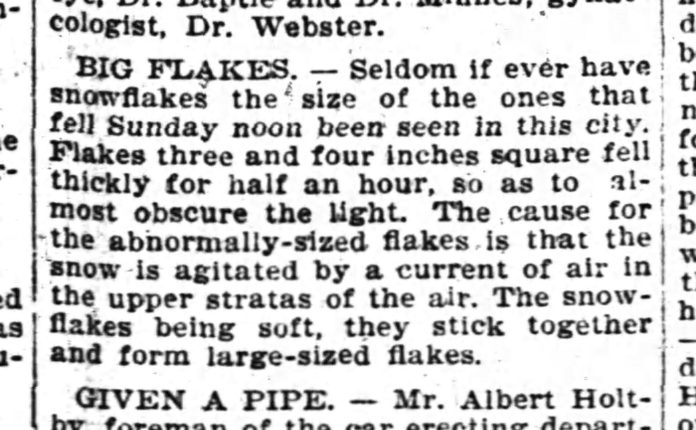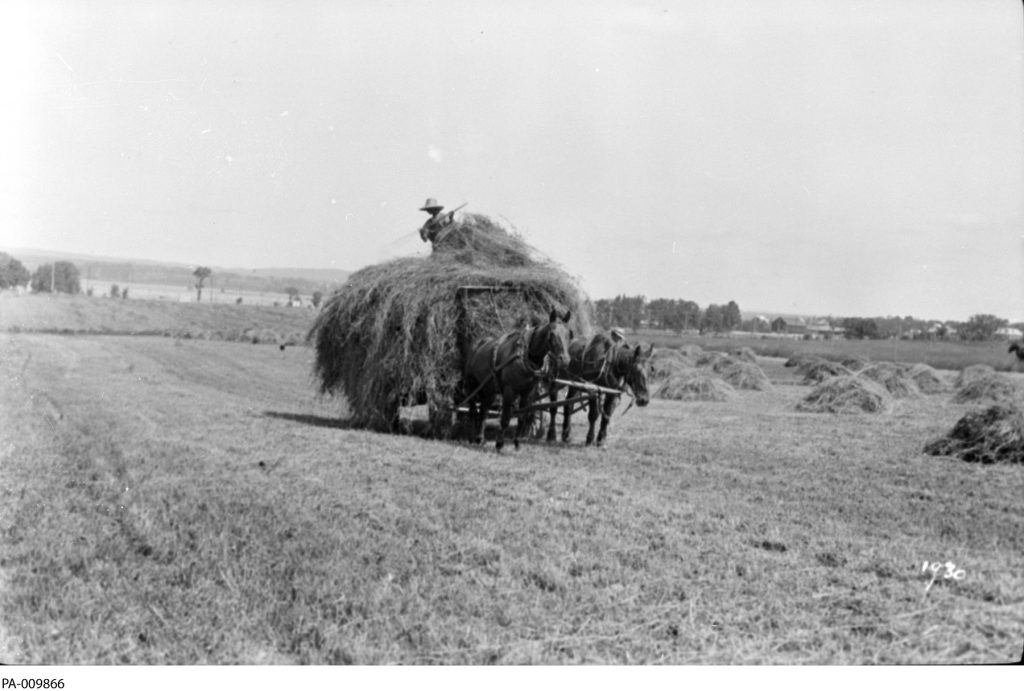
By Dave Allston
The enduring traditions of Christmas in Canada largely originate from the Victorian Era. From the North American adaptation of Santa Claus, to Dickens’ A Christmas Carol which exalted the virtues of charity and the importance of family and friends, and with other European traditions—such as decorated trees, carols and music—Westboro’s final Christmas of the 1800s would have been similar to Christmas in 2021 in many ways.
Certainly the imagination of a “simpler time” would have found 1899 to be exactly that, as the emphasis of the holidays of that time period was on family and home (and church, to a great extent). It was also a time where there was a clear divide between classes. Not just in fast-growing Ottawa, but down on quiet rural Richmond Road in Nepean Township, where one family would enjoy a Christmas filled with grand meals, expensive presents, and fancy dress in a large, modern home just down the road from a family where toys and elaborate dinners were but a dream, during a time where survival was gift enough.
Though these extremes existed even in Westboro, 1899 was a pivotal year in the history of the neighbourhood. If there was ever a time, in the early days of this burgeoning village, that optimism and excitement would have captured the hearts of all—young and old, rich and poor—1899 was that year.
Several events occurred in 1899 to move Westboro from a barely-there hamlet on the road to Richmond to a community with aspirations of so much more. Dating back to 1870, Westboro had existed merely as a small cluster of buildings and establishments around the sawmills erected by James Skead (today’s Westboro Beach). A small store, a farmer’s hotel, and a post office were the extent of late 19th century Westboro. After the mills were destroyed by fire in 1888, life was even bleaker, and the population of the village dropped off well below 50 families.
December 1899 had been an unseasonably warm month, and the days leading up to Christmas likely had a crisp, more fall-like feel. And there was change in the air.
A probably favourite pastime of the 1899 Christmas season for locals may have been watching the Ottawa Electric Railway (OER) Company grade a right-of-way and lay tracks through the farms south of Richmond Road, from Holland Avenue out to Britannia. The line was a commercial venture aimed at bringing Ottawans out to the OER’s own endeavour at Britannia Park. But for Westboro, it represented an instant link to the city. When the line opened in May 1900, Ottawa became easily accessible, thus creating significant value to the formerly-isolated farms in Nepean Township.
To enable the streetcar line, local farmers had sold strips of their farms to the OER in late 1899. Amounting to a bit of a Christmas bonus, landowners such as McKellar, Cole, Paysant and Holland were paid up to $2,000 apiece.

A little further to the east in Hintonburg, the Christmas season was an exciting time for locals as the OER rushed to complete the tracks through Hintonburg. It was announced on Dec. 23 that street car service in Hintonburg was complete through the village, with both east and west tracks in use. In fact, on that same day, one of the new streetcars being built by the Ottawa Car Company for the new Britannia line was demonstrated in a trial drive through the city.
Further seizing the investment opportunity that awaited, or perhaps coincidental timing of a planned retirement, Thomas Cole and his son John, who had established the Highland Park Dairy Farm over their roughly 300 acres of land, sold off their farm features in 1899. They began the year owning 25 cattle, 12 hogs and seven horses, but, by Christmas, owned only two cows. Instead, they began to offer small building lots for sale on their farm. Soon after, most of the other local farmers would follow suit, including George and Alison Holland, who, in May 1899, laid out part of their property, creating the new Hilson Avenue. By the onset of World War I, most of Westboro, which less than 20 years prior had been almost exclusively farmland, had been chopped up into the same lots that still exist today.
Excitingly, the name “Westboro” was also new in 1899. A board of residents decided that the name “Skead’s Mills” was outdated, and they initially selected the name “Springbrae,” largely pushed by John McKellar, who was of Scottish background and whose farm featured a prominent spring and hill. After an outcry, a new meeting was held where all local men 21 years of age or older voted on the new name. Of the 49 voters, 27 selected Westboro (Rockmont and Earlswood were also on the ballot!). The new name was officially adopted May 1, 1899.
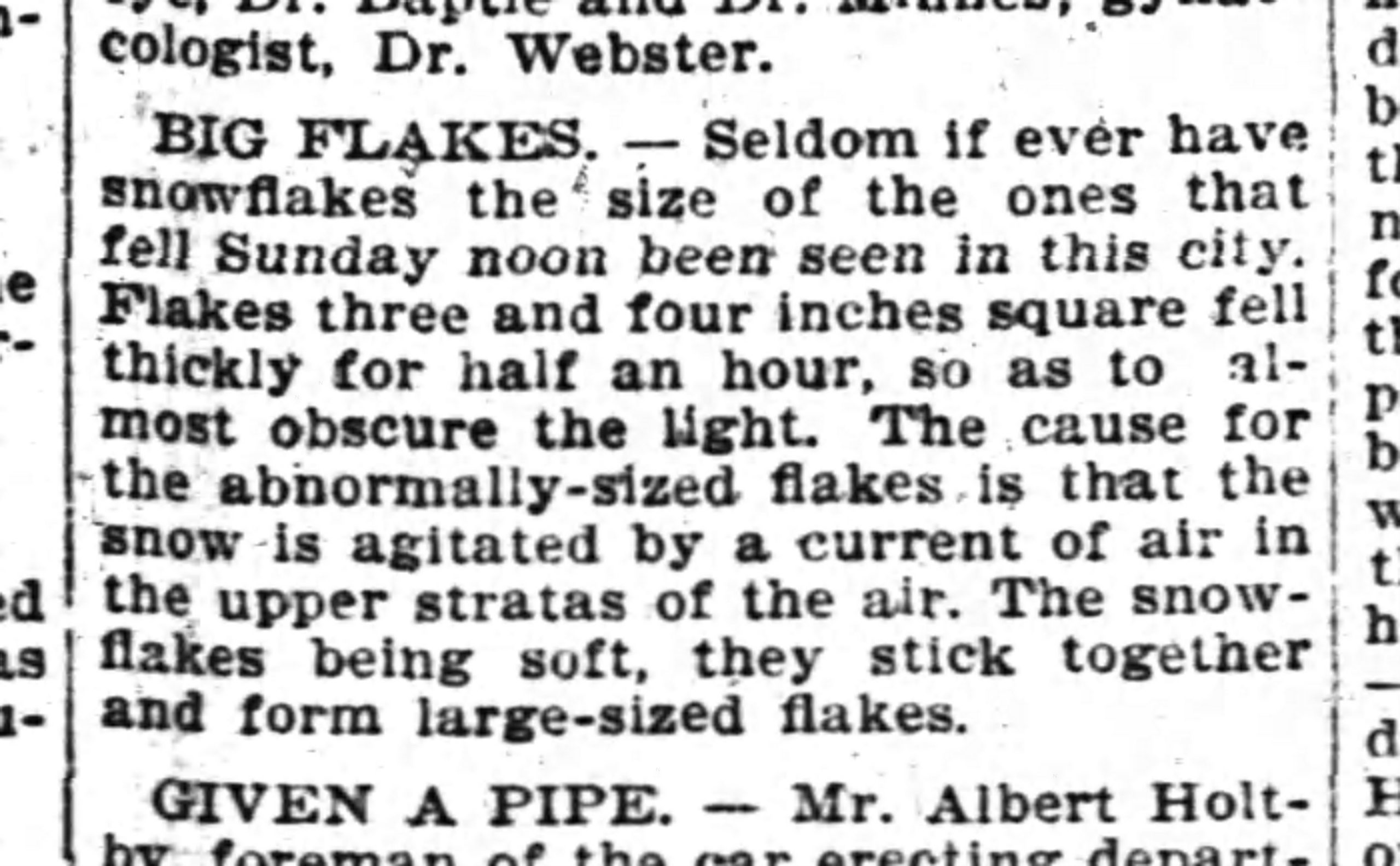
By Christmastime, there would have been great excitement among the residents of what was to come. Appropriately, on Christmas Eve, a magical light snow fell on Westboro and Ottawa, the Ottawa Citizen reporting, “Seldom if ever have snowflakes the size of the ones that fell Sunday noon been seen in this city. Flakes three and four inches square fell thickly for half an hour, so as to almost obscure the light.”
The weather had been mild leading up to Christmas, so much so that hockey and ice skating was on hold, pending colder weather. The land north of the Transitway (then the CP Rail line) was quiet, a mix of scraggly and wooded land. The ruins of the mill still stood in some places, as the last remnants still do today. The cows of local cattle dealer James Magee occupied this space, and little else. Thomson’s Bay (today’s Westboro Beach) was a spot where, later in the winter, locals could do a little skating, sliding, or cut ice for their ice houses.
Back on Richmond Road, records show that from today’s Island Park Drive out to Woodroffe lived 77 families, totalling 338 people. They lived in houses ranging from one-room shacks, assessed at $50, to the $17,200 farm and showpiece villa home (Maplelawn) owned by the Coles.
The busiest spot in Westboro that Christmas would likely have been the home of Daniel and Catherine Shipman. They lived in half of what is now the Aylen-Heney stone house—on Richmond Road by Kirkwood Avenue—tenants on the sprawling estate of Frederick Heney. That August, Catherine gave birth to their 10th child Annie (with four more children to come later!), and at Christmas the family had children ranging from four months to 13 years old occupying what was a two-storey, six-room house.
As half of the houses in Westboro at the time were valued at $400 or less (approximately $13,000 in 2021 dollars), the majority of residents lived in poverty. There were, of course, no sewers or water service, no electricity and few conveniences. Most of the men in these families were farm labourers, or they obtained work in the area on the railroad or travelled away to lumber camps.
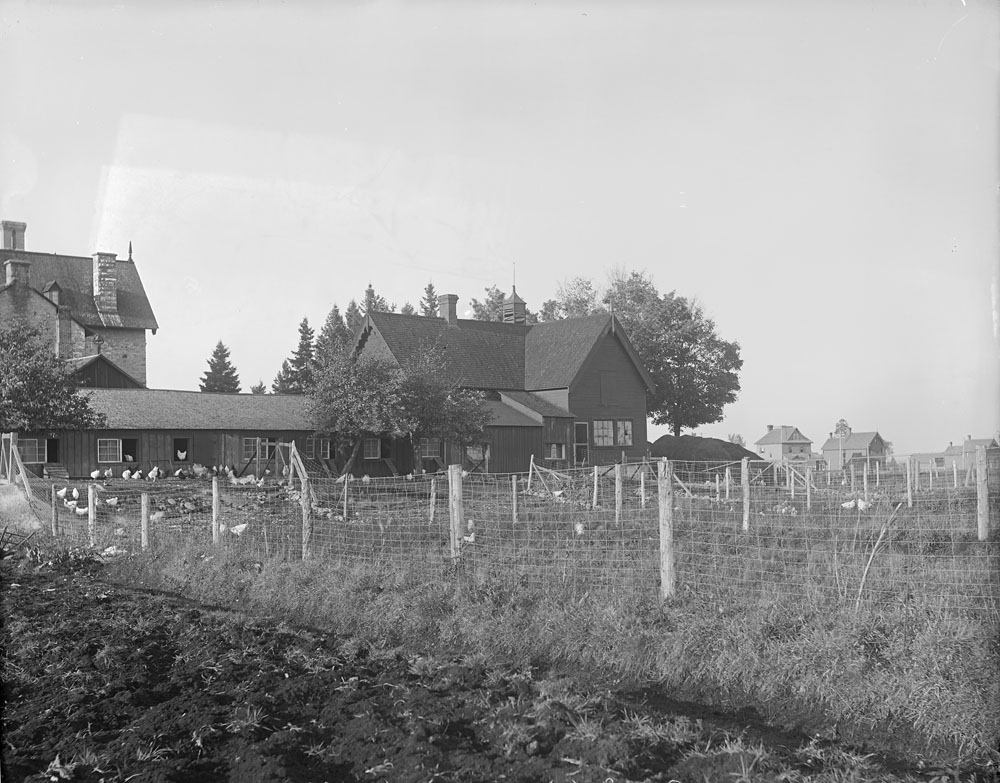
Those who were well-off would have afforded a horse and buggy and could travel into Ottawa via Richmond Road (which included a toll charge to be paid at the toll house just before Carleton Avenue) to do their shopping.
As far as businesses in Westboro at the time, there were very few. Forty-nine-year-old William Lowry operated a general store and was the village postmaster from 1892-1902 at the northeast corner of Richmond Road and Winona Avenue (on the site of Kitchenalia’s new location), while 57-year-old John Falls, who would soon become Carleton County Constable, operated a small bakery and butcher shop from his home on Picton Avenue, just behind Lowry’s store.
Benjamin Read Whiteley was a 31-year-old jeweller and watchmaker who had a small shop in his home at the southwest corner of Richmond Road and Churchill Avenue (on the site of today’s LuluLemon), while Joseph Edey, brother of well-known Ottawa architect Moses Edey, had been operating a small grocery store (on the site of today’s Westboro Legion building), but he passed away on Dec. 5, just prior to Christmas.
Thus, shopping within Westboro was limited, though it is likely that many of the gifts opened in Westboro on Christmas morning 1899 would have been purchased at one of these small settler businesses.
Certainly the churches would have been a popular spot, as All Saints Church and the Methodist Church, on Richmond Road just east of Winona Avenue, and the old Presbyterian Church would have hosted their full congregations for Christmas services.
Nearby, Christmas week was a sad one for the Hintonburg Public School as they bade farewell to their long-time beloved principal Miss. Elizabeth Tomkins on Friday, Dec. 22.
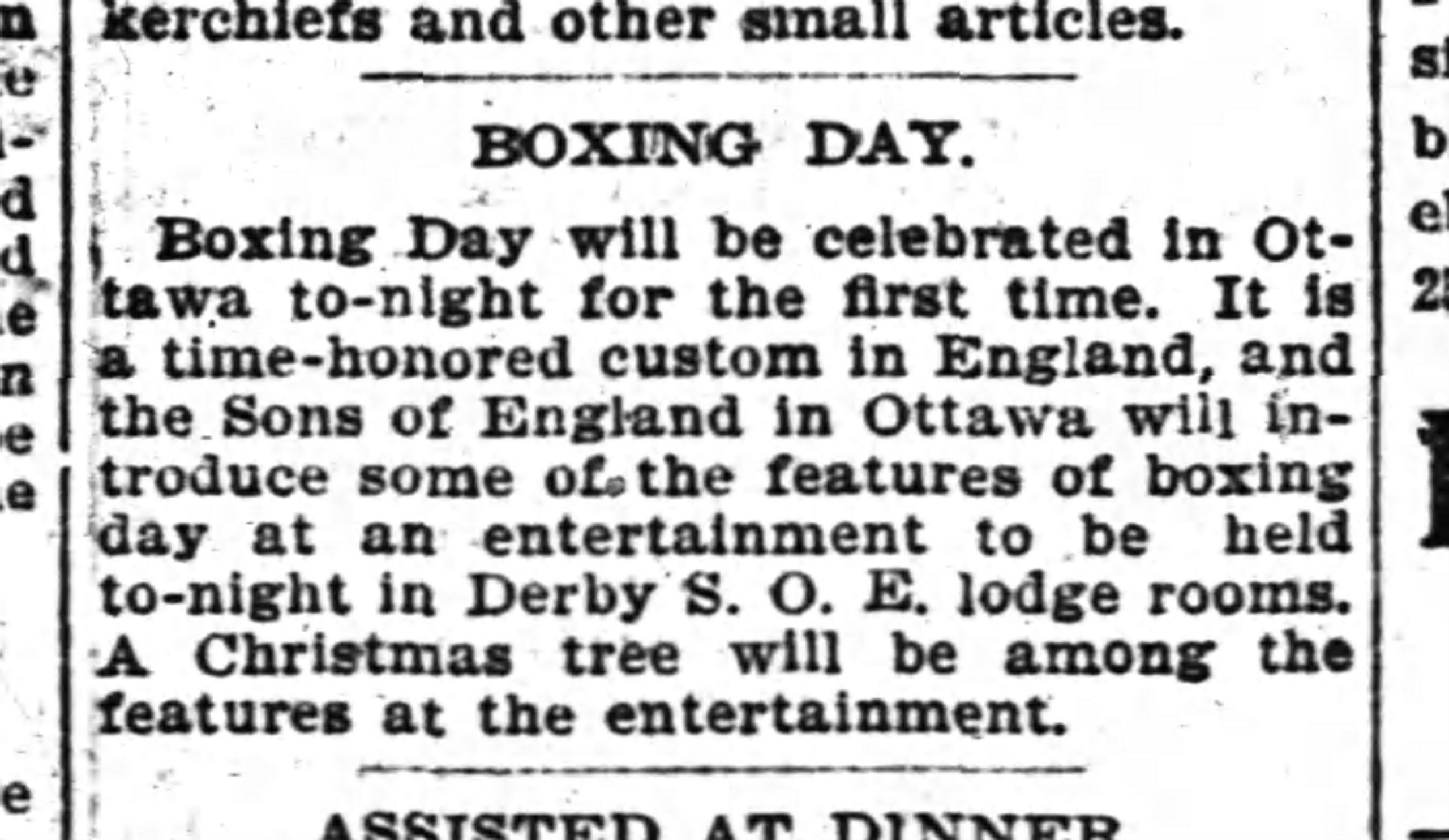
Meanwhile in Ottawa, parents were complaining to the school board about teachers telling students that there was no Santa Claus, some threatening to remove their children permanently. It was also reported in the Ottawa Journal, in an article titled “An Old Custom Dying” that few families had Christmas trees that year. The year 1899 was also notable as Boxing Day was celebrated in Ottawa for the first time, when the Sons of England introduced the custom through a large celebration attended by over 500 people.
Though life in Westboro would change significantly after Christmas 1899, much of what was important then is still important today, and bringing to life the excitement and optimism of 122 years ago certainly helps tell the story of how today’s Westboro came to be.
